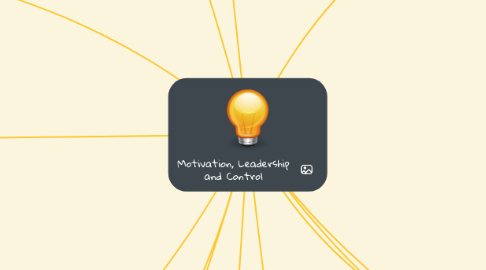
1. Democratic Style
2. Free-Rein Style
3. Psychological Contract
3.1. Employee’s Contributions
3.2. Organization’s Inducements
3.3. Human Relations-
3.3.1. Job Satisfaction
3.3.2. Organizational Success
4. Importance of satisfaction in workplace
4.1. Job Satisfaction
4.1.1. Degree of enjoyment
4.2. Morale
4.2.1. Overall attitude in workplace
4.3. Turnover
4.3.1. leaves and must be replaced
5. Priorities For Workforce
5.1. Family Orientation
5.2. Sense of Community
5.3. Quality of Life Issues
5.4. Volunteerism
5.5. Autonomy
5.6. Flexibility & Nonconformity
6. Motivation in the workplace
6.1. Classical Theory
6.2. Behavior Theory
6.3. Contemporary Motivational Theories
6.3.1. Human Resources Model
6.3.2. Maslow’s Hierarchy of Needs Model
6.3.3. Two-factor Theory
6.3.4. Expectancy Theory
7. Managerial Styles
7.1. Autocratic Style
8. 21st Century Leadership/Management
8.1. Motivation
8.2. Leadership
9. Concurrent
10. Planning and controlling are two separate functions of management
11. Controlling
11.1. Definition
11.1.1. setting standards, measuring actual performance and taking corrective action.
11.2. Importance
11.2.1. facilitates co-ordination
11.2.2. helps in planning
11.2.3. protecting the workplace
11.3. Process
11.3.1. 1. Establishing standards
11.3.1.1. Measurable or tangible
11.3.1.2. Non-measurable or intangible
11.3.2. 2. Measuring performance
11.3.2.1. tangible standards
11.3.2.2. Sources of information
11.3.2.2.1. Personal observation
11.3.2.2.2. intangible standards
11.3.2.2.3. Statistical reports
11.3.2.2.4. Oral/ written reports
11.3.2.3. Negative
11.3.3. 3. Comparing performances
11.3.3.1. Deviation
11.3.3.1.1. Positive
11.3.3.1.2. Major
11.3.3.1.3. Without the basis of planning, controlling activities becomes baseless
11.3.3.1.4. Minor
11.3.4. 4. Take corrective action
11.3.4.1. correct negative deviations
11.4. essential steps to prevent in the future.
11.5. Types of Control
11.5.1. Feedforward
11.5.2. Feedback
12. Relationship
12.1. without controlling, planning becomes a meaningless exercise
12.2. Management by objectives
13. Strategies for enhancing job satisfaction
13.1. Reinforcement/ behavior modification
13.2. Participative management and empowerment
13.3. Job enrichment and job redesign
13.3.1. Job Enrichment Programs
13.3.2. Job redesign Programs
13.4. Modified work schedules
13.4.1. Work-Share Programs
13.4.2. Flextime Programs
13.4.3. Telecommuting/ Virtual Office

